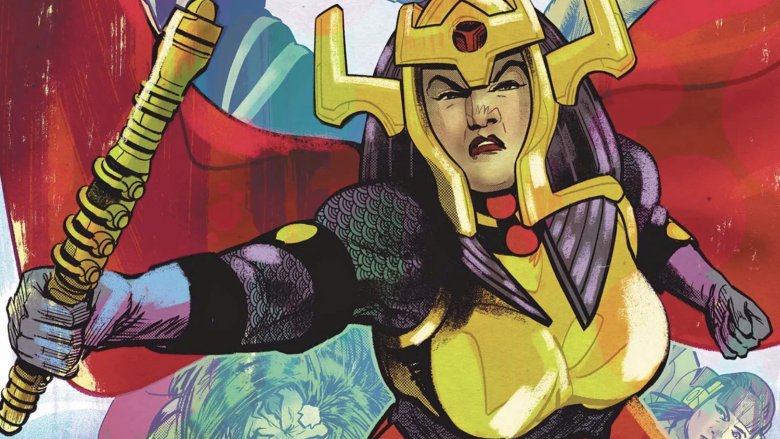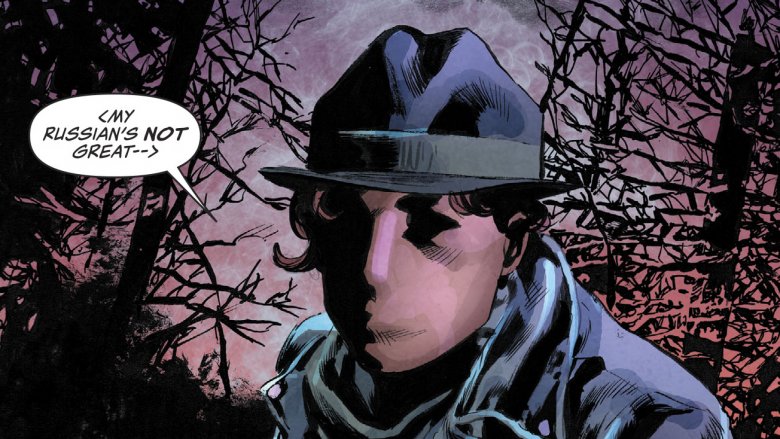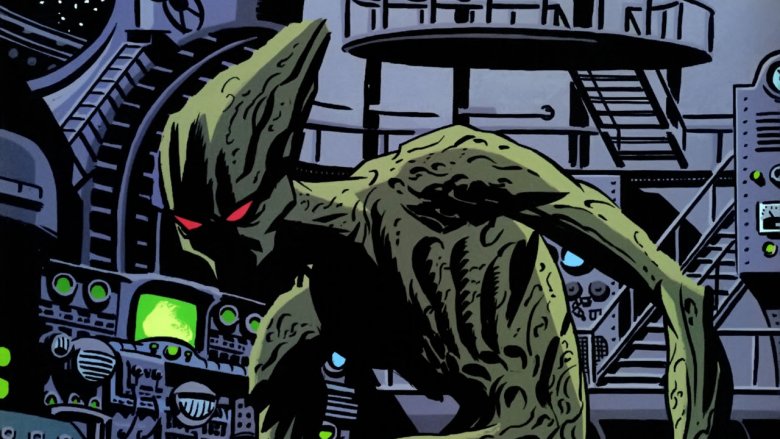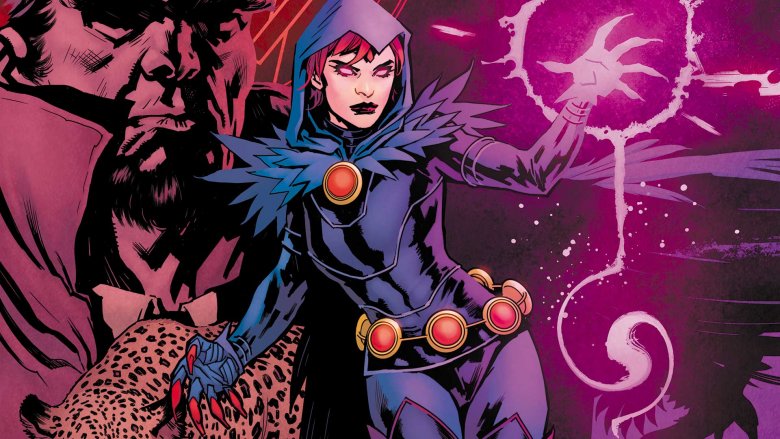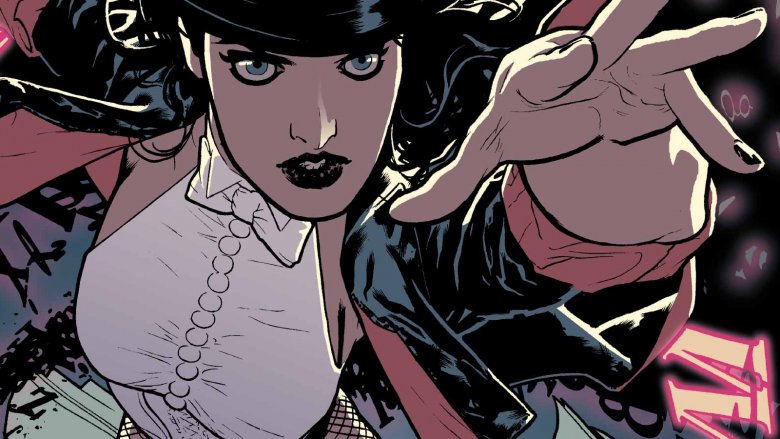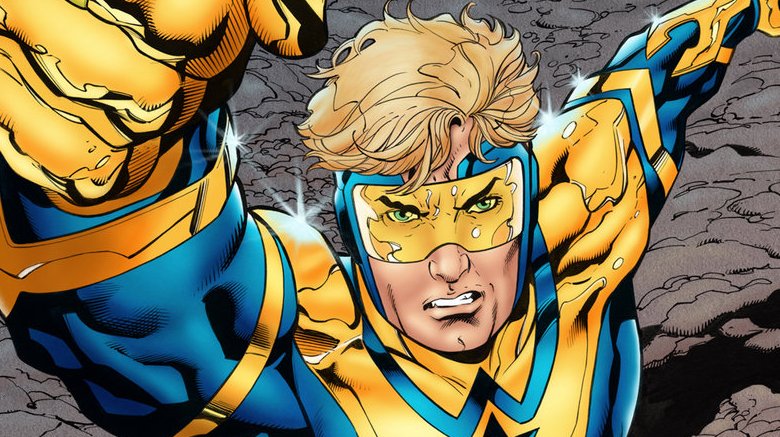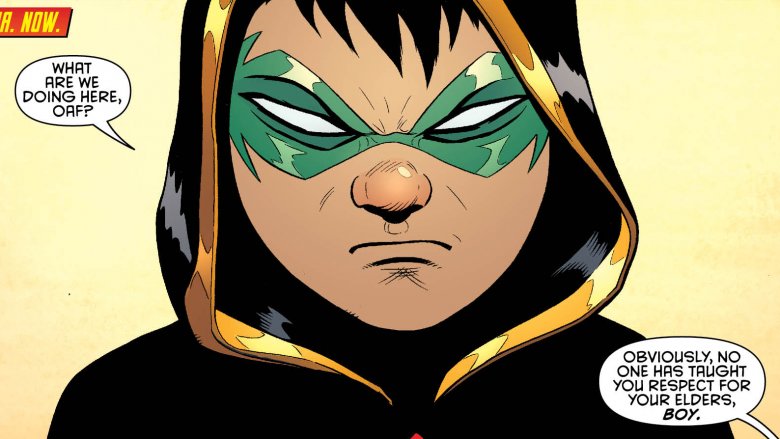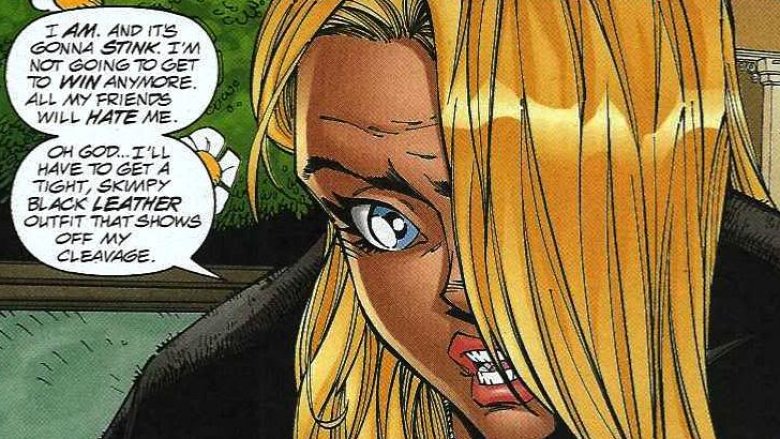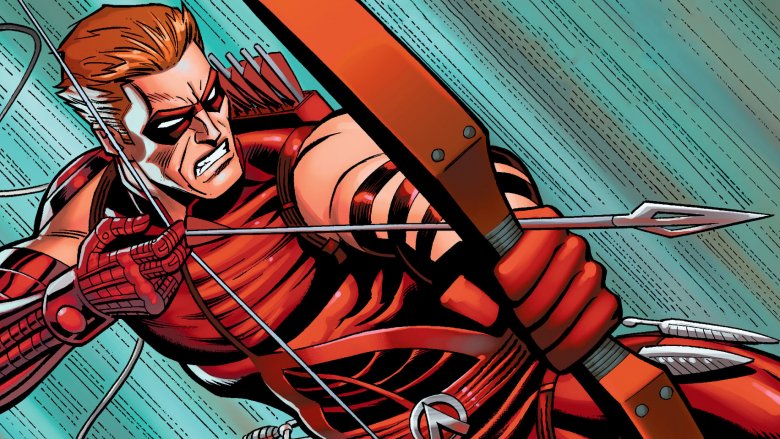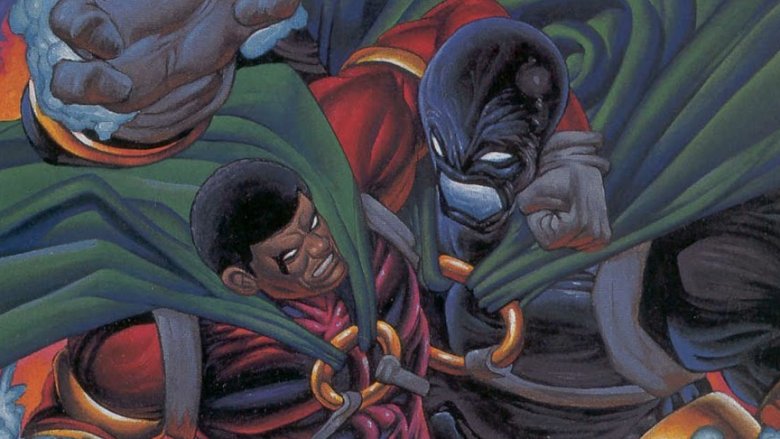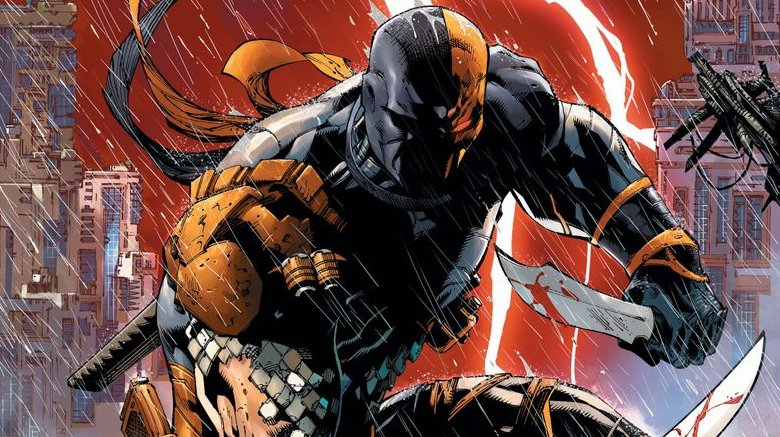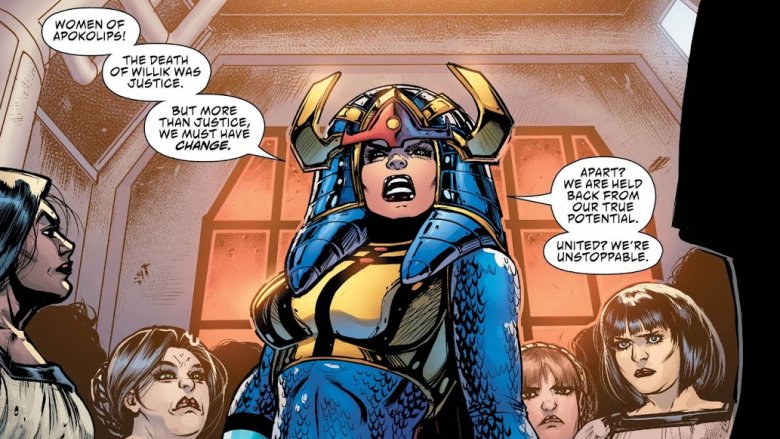DC Characters Who Deserve Their Own Movie
We may receive a commission on purchases made from links.
Superman. Batman. Wonder Woman. At last, all three members of the DC trinity have their own movies. Who would have guessed they'd be joined by the likes of Aquaman and Shazam — let alone the Joker? In this bright new age of capes and cowls, few strict rules seem to remain about which comics characters deserve a movie, who would rake in the most money, or who might appeal best to the widest audience. The field is wide open, and the possibilities are endless.
Good thing the DC universe is similarly wide and wild. With decades of history under the venerable publishing company's belt, it's easier to name a type of character DC hasn't explored onscreen rather than all the ones it already has. Stage magicians wielding actual sorcery? DC's got you covered. Space cops who run on willpower channeled through their intergalactic jewelry? That too. A villain who uses condiments to induce terror? He's not just real — he's called the Condiment King, and he's appeared in cartoons and comics. Who among this myriad list of do-gooders, ne'er-do-wells, and all those who lie between best deserve their own chance at cinematic greatness? We're here to find out. Here's a look at some DC characters who deserve their own movie.
Renee Montoya
Life in Gotham City is tough for anyone. Have a house number with 2 in it? Better make sure Two-Face doesn't plant a hilariously themed bomb on your front steps. Enjoy attending comedy clubs? It's not unlikely the Joker might just decide to pay your favorite haunt a murderous visit. Sure, you'll get an amazing shot now and then of the bat-signal splashed across the clouds, but is the headache of the Batmobile tying up downtown traffic really worth it?
Now imagine being a Gotham City Police Department detective. That's Renee Montoya, in spite of caped crusaders and brutal baddies alike. Created for Batman: The Animated Series, Renee came into her own within the pages the Gotham Central story arc "Half A Life," in which she's outed as a lesbian. Renee's life is never smooth, from her romantic entanglements to her disillusionment with the system she works within — most notably, this led to her assuming the mantle of the Question, a faceless hero who does the work an officer of the law cannot. But her deep-seated devotion to making the world a better place endures, in spite of brutal memories, regrets, and too many bottles of liquor. Renee is exactly the sort of complex character the DC movies deserve.
Martian Manhunter
The Martian Manhunter is a bit of a collage, as far as superheroes go. Sometimes, as he was in the Silver Age, he comes from a populous Mars full of sentient life, while other interpretations cast him as the last of his race. His name implies a ferocity that does not define him. Though he's had multiple solo titles to his name, he's probably best known as part of the Justice League. He is an obsessive fan of a certain brand of chocolate sandwich cookie. He contains multitudes — and that's exactly why he'd make for great cinema.
Picture it, perhaps as Darwyn Cooke did in his seminal series The New Frontier: Alone on a strange planet, Martian Manhunter (J'onn J'onzz to his friends) attempts to blend in with the populace... to middling results. Shazam! showed us just how much fun the DC movies can have telling a fish out of water story — why not take it to an interplanetary scale? While Billy Batson was a kid confronted with adult responsibilities; Manhunter is a poised adult marooned in a world he wants to save, but doesn't understand. He's a calm, meditative presence, sure, but he also doesn't understand how hilarious he looks in a gaudy Christmas sweater. He's a hero who is as inspiring as he is endearing, with shapeshifting powers that could launch a film into the stratosphere of visual heights. What's not to love?
Raven
The 2003 Teen Titans cartoon had a lot going for it, but one of its greatest assets was surly, serious, secretly sympathetic Raven. Played to gravelly perfection by Tara Strong, Raven was the sarcastic heart of the show. It is this contrast that makes the character so beloved in all her incarnations — though she keeps to herself and can be quick with a barb, she loves with a passion so fierce it can overturn the apocalypse.
A movie starring Raven has a plethora of interpretative options to choose from. It could put Raven in high school, her dark origin a potent metaphor for adolescent changes, as more than a few stories for younger readers have done over the years. It could imagine Raven as an adult superheroine in her own right. It could be horror-tinged and draw on the eldritch nature of her heritage, a fantasy tale set in her home realm of Azarath, or a team story set in Titans Tower. What makes these possibilities so potent is the fact of the character that lies at the heart of them all: a young woman aching to do some good in the world despite her daunting challenges. If that is present, the rest will fall into place.
Zatanna
Everyone loves magic tricks. Sure, we like to call out the moment the illusion falls apart, and no, none of us are as easily impressed as we were as children. But there's a reason sleight-of-hand videos go big on YouTube: There's just something undeniably exciting about seeing the laws of reality broken. We might know the rabbit didn't really materialize within the hat, but goodness, how did it get in there so invisibly?
Zatanna channels that thrill in high style — was there ever a sharper superheroic look than her tuxedo and top hat? — while adding some literal magic to it. Rather than receding into the shadows of a secret identity, Zatanna embraces her powers by becoming an internationally renowned illusionist who chases down the bad guys when she's not taking curtain calls. This charisma makes her a charming character across time, creative team, and interpretation — she's got all the swagger of a showman, plus the do-gooding heart of a hero. In addition, the sheer scope of her abilities allows for enormous flights of visual and storytelling fancy. Want to teleport? Fill a room with soap bubbles? Rearrange some mountains? It'll take the wind out of her, but all are theoretically possible within her powers and would make for some smashing cinema.
Booster Gold
Most superheroes are notable for their daring deeds, heroic creeds, or striking aesthetics. And then... there's Booster Gold. It's not that Booster hasn't saved the world, striven continuously to do the right thing, or worked with other heroes in thrilling tributes to the power of teamwork. It's just that he messes up a lot. And that he originally became a superhero to build a corporate empire. And that his powers mostly come from things he stole.
Booster was once a denizen of Gotham City, albeit during the 25th century. Laid low by his gambling addict father's schemes, he ended up stealing superheroic tech from the Metropolis Space Museum, getting a robotic security guard named Skeets on his side, and jumping into the past to make a name for himself, entirely off the wonder and magic of other, better heroes. Mostly, this blew up in his face: When the public wasn't mangling his name into "Buster," he was going bankrupt. And yet that didn't stop Booster from persevering. He's been a repo man with his superheroic bestie, Blue Beetle. He's saved the world alongside the Justice League. He's made mistakes, but he's always moved forward. In the end, Booster Gold could lead one of the most moving superheroic films ever. His origin in grifting defines him, yet not by its success — rather, by how far he's moved beyond it.
Damian Wayne
Batman and Robin might be a legendary dynamic duo, but the person in the green pixie boots hasn't always been the same Boy Wonder. There was Dick Grayson, the original sidekick, now known as Nightwing. There was Jason Todd, infamously killed off by phone-in vote. There was Tim Drake, wiz-kid child of the 1990s. Even a few young women have been Robin, most notably Stephanie Brown and Carrie Kelly. But only one Robin has been Bruce Wayne's actual son: the irascible, irresistible Damian Wayne.
The product of Wayne's liaisons with the deadly Talia al Ghul, Damian was trained by the League of Assassins in every way to kill a man. Unfortunately, he received no instruction in basic human empathy, and so he arrived at Wayne Manor a self-important, prickly little wunderkind with a chip on his shoulder the size of the Batmobile. And yet, for all his arrogance, Damian proves to be a young man longing for his father, despite the fact that he would rather die than admit it. After years of kindness, work, and getting used to his father's "no kill" policy (plus one death and resurrection), Damian has emerged as one of DC's most compelling heroes. And come on, who doesn't want to see Batman handle parent-teacher conferences?
Arrowette
Superheroes have spent much of the last few years exploring the intersection of costumed crusading and pop culture. Media as diverse as Marvel's X-Statix series and the anime Tiger and Bunny have played with the idea of superheroes as brand ambassadors, reality stars, and outright mascots.Yet few have explored the offscreen implications of that life, especially upon younger heroes. Enter Arrowette — and her overbearing, fame-seeking mother.
Years ago, Bonnie King was the original Arrowette. She didn't accomplish much beyond annoying the dickens out of Green Arrow, and then she grew up and had a daughter. But Bonnie wasn't about to give up on fame that easily. Her daughter Cissie was put through a rigorous cycle of archery, gymnastics, martial arts, and everything else necessary to become a young do-gooder. Then, naturally, she was given a costume and sent forth into the world, swamped by her mother's desire to live vicariously through her. Happily, she found fellowship in her Young Justice teammates, but it came at the cost of her childhood. In the world of the DC films, superheroes have overtaken the airwaves — what better way to explore that than through the journey of a child star chafing under an overbearing stage parent? Especially when the heroine in question manages to be good-hearted, skillful, and often hilarious despite the expectations she struggles against.
Speedy
Speedy's struggles with drug addiction have become a bit of a joke to many comics fans. Immortalized on the cover of 1971's Green Lantern/Green Arrow #85, he's caught using heroin by the titular do-gooders, the latter of which exclaims, "My ward is a junkie!" in absolute horror. It's campy, over the top, and ultimately emblematizes an era in which drugs were omnipresent, but not very well understood.
But that cover launched a storyline that follows the character to this day. Like so many, Speedy, who went on to rechristen himself Arsenal and Red Arrow, continues to struggle with demons. Add in Lian, his daughter by the villainous Cheshire, and he's one complicated dude. But despite these unorthodox attributes, he keeps on keeping on. Has he fallen off the wagon? Yes. Has he always made the best choices? No. But he refuses to stop believing in his own ability to change for the better. That's the kind of superheroic moral big enough for the silver screen.
Icon
Once upon a time, an alien baby crash-landed in the rural United States. Adopted by kindly humans as a beloved son, the young boy was perfectly normal in appearance, yet possessed incredible powers like flight, invulnerability, and super-strength. He protects the world using these fabulous gifts, and seeks to make society a better, safer, and more just place. Superman, you say? Nope — we're talking about the one and only Icon.
Rather than contemporary Kansas, Icon crashed in the fields of the antebellum South, where an enslaved woman named Miriam took him in. For decades, Icon bided his time, using his powers to perform small acts of good, waiting for the Earth's technology to catch up with his alien home's. But he couldn't lie low forever. After teenager Raquel Ervin witnessed his powers, she persuaded him to become a superhero and make her, as the irrepressible Rocket, his sidekick. Together, they work to make the world, especially their hometown of Dakota City, a better place. Icon isn't just a hero, he's a testament to the power of kindness toward all, grace under pressure, and the bonds of service that can unite generations. He's not just a hero anyone can love — he's someone the moviegoing public needs.
Deathstroke
Deathstroke the Terminator is not a subtle character. It wasn't enough to have "death" in his name — he needed an appellation that really made it clear what he planned to do. He's basically named Killy the Murder Dude. And with his long history of cruelty, betrayal, manipulation, and, yes, termination, he's definitely lived up to his over-the-top moniker.
But darn it if the best creators haven't managed to make him a fascinating symbol of hardcore comics excess. Perhaps his most widely known incarnation is his animated self: Ron Perlman's silky portrayal of Slade (Deathstroke's first name) in the 2003 Teen Titans cartoon is unforgettably chilling. The comics have followed suit, with work like Christopher Priest's Deathstroke series exploring the man in the mask as a soldier who can't quit the fight, despite the way it ensnares his family and friends. Though he never quite earns redemption, he does find a place as the man who does what others won't, while doing it in undeniably cool style. He brings the violence of Deadpool, yes, but he accompanies it with pathos and an exploration of what violence does to a man's life. Would he be a good guy by film's end? Probably not. But he might have confronted the audience with a vision of the superheroic game's eternal enemies — and that would be a unique movie indeed.
Big Barda
Superhero movies are going cosmic. Captain Marvel, set to headline the next phase of the Marvel Cinematic Universe, is firmly space-rooted. Shazam's powers come from a wizard beyond time and space. These films, much like the comics they adapt, are getting weird, wild, and wide in scope. DC, luckily, has an incredible history of telling just those kinds of stories. Enter Big Barda.
A New God of Jack Kirby's alternate-dimension Fourth World, Barda is from Apokolips, an industrial hellscape ruled by fear, degradation, and violence. Raised to be one of the Female Furies, a terrifyingly vicious pack of warrior women who do the bidding of Apokolips' ruler Darkseid, she finds salvation in the form of Scott Free, who would become the heroic Mister Miracle. It is alongside Scott that Barda finds strength and freedom, finally allowing her to escape Apokolips and find a life worth living on Earth. Barda's tale is a classic one, in which a hero discovers she's far stronger than she'd realized, how much possibility for change her life holds, and her boundless capacity for love. Plus, she's a heavy hitter for the ages and wears unquestionably one of the coolest DC costumes of all time. She's a hero who never thought she'd be one, from a visually and thematically rich part of the DC universe, who makes up one-half of a classic comics couple. She's not just a potential big-screen star — she's already ready for her close-up.
